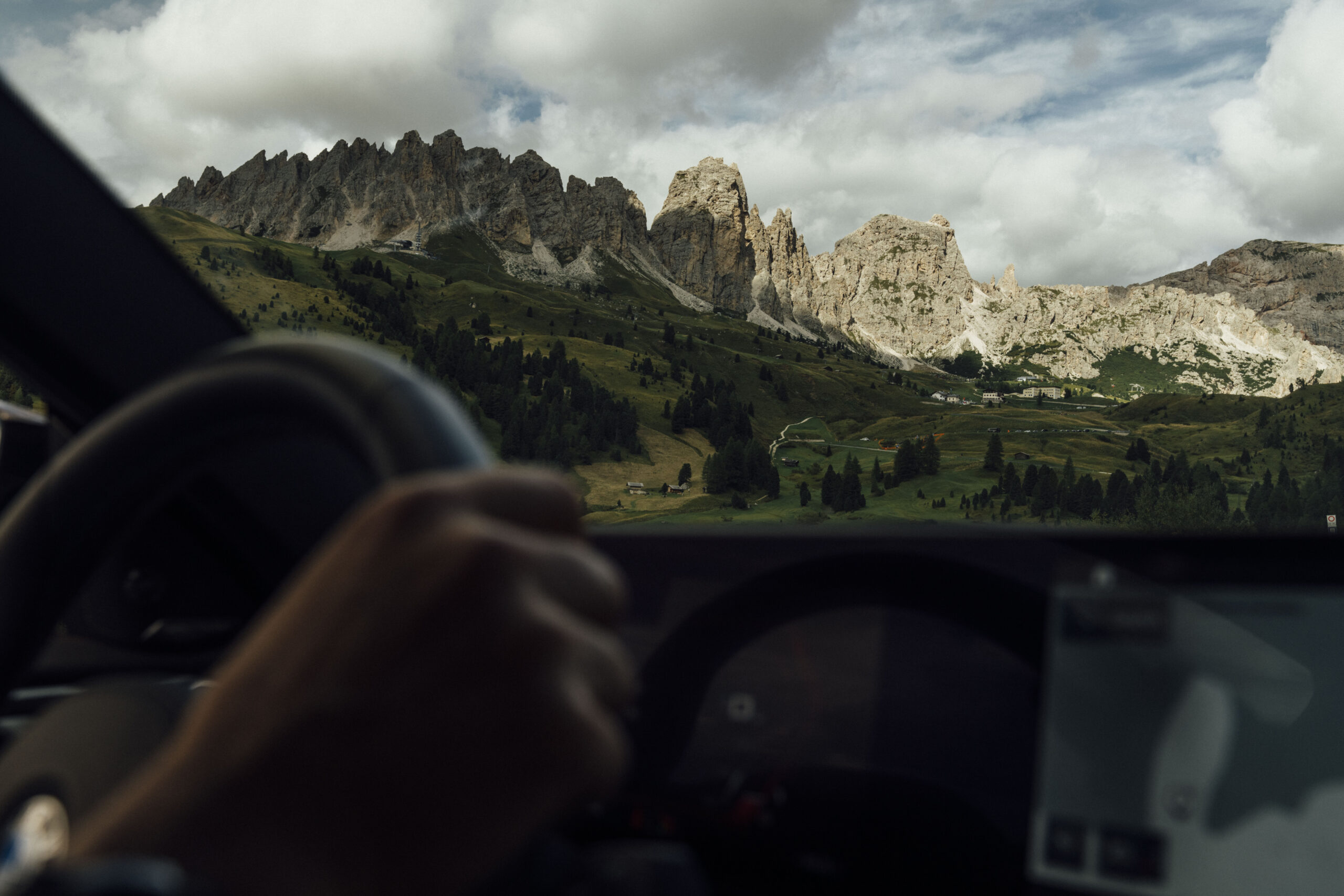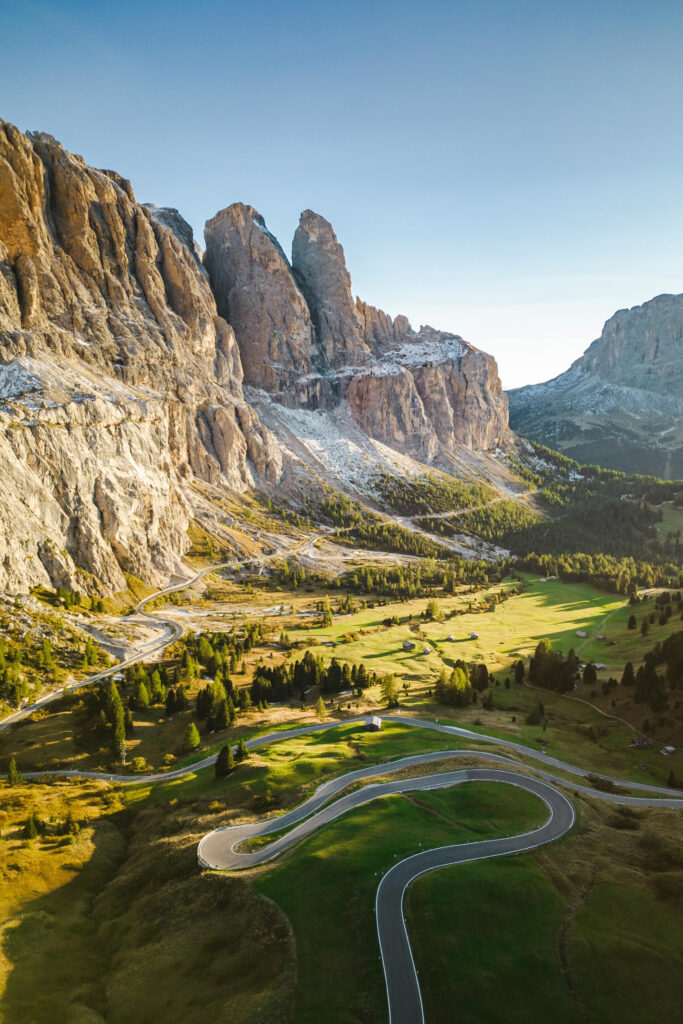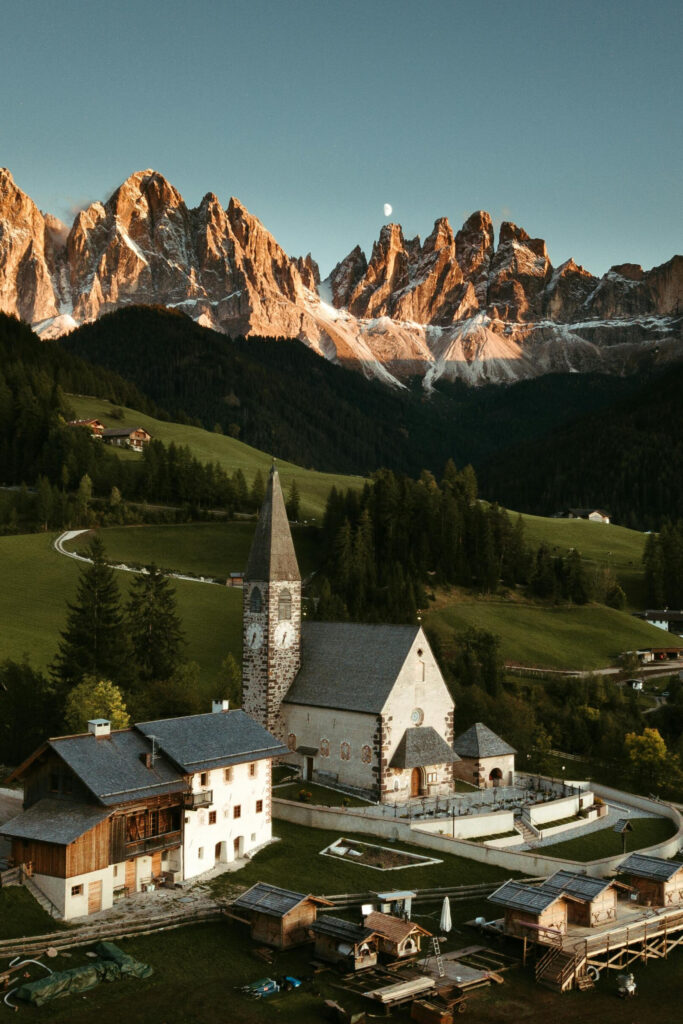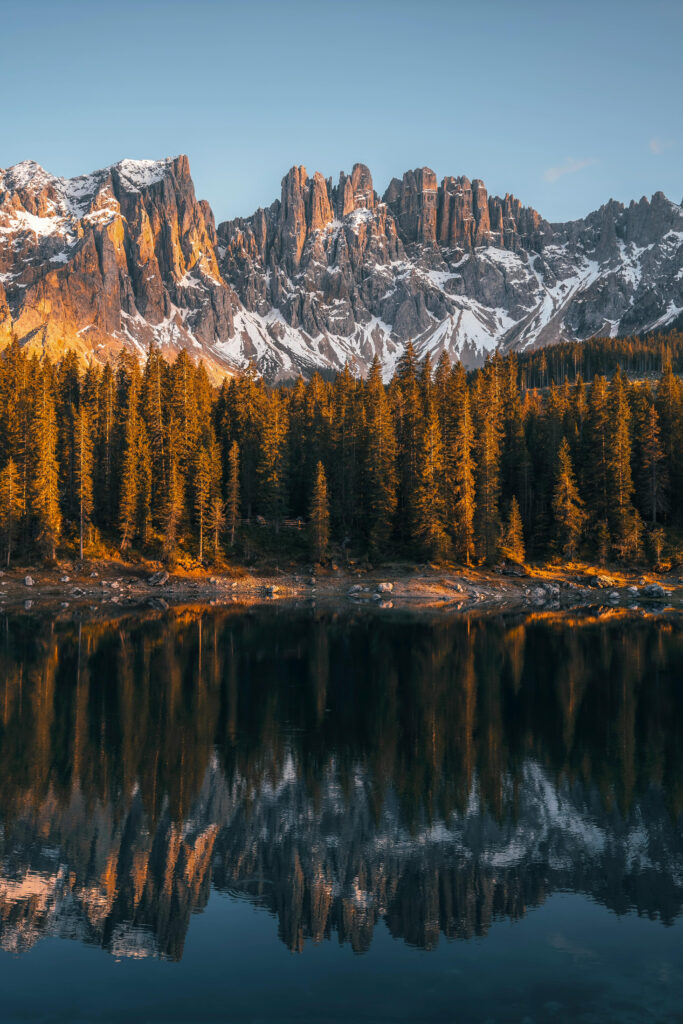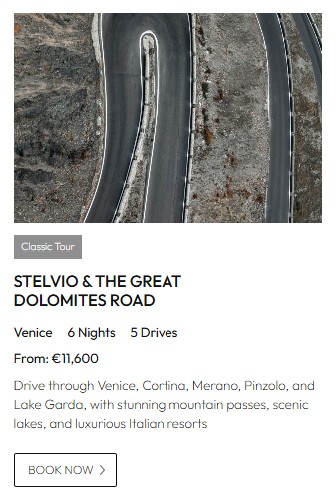View All Blog Articles View Tours
Driving Through History: The Great Dolomite Road
There are scenic drives, and then there are journeys that transport you. Carved through a landscape of such staggering and unique beauty it has been designated a UNESCO World Heritage Site, the Great Dolomite Road is firmly in the latter category. This ribbon of tarmac, twisting and climbing through the heart of Italy’s ‘Pale Mountains’, is more than just a route between Bolzano and Cortina d’Ampezzo; it’s a drive through geological time and a poignant chapter of European history.
A road born of strategy
Long before the hum of modern engines, the Dolomites were an isolated, almost impenetrable wilderness. In the early 20th century, with the region under the control of the Austro-Hungarian Empire, a plan was hatched. The Great Dolomite Road, or Große Dolomitenstraße, was completed around 1909 not for war, but for connection—to link the remote valleys of Fassa, Livinallongo, and Ampezzo with the main hubs, opening them up to trade, tourism, and imperial administration. Little did its engineers know that within a few years, their marvel of road-building would become a vital strategic artery on one of the most brutal fronts of the First World War.
The white war: A frontline in the clouds
When Italy declared war on the Austro-Hungarian Empire in 1915, this new road became a critical supply line. The front line cut directly through the peaks it was designed to showcase. What followed was the Guerra Bianca, or the ‘White War,’ a conflict fought at extreme altitudes, in vertical rock and year-round snow.
As you drive the road today, the landscape is scarred with this history. Tunnels bored into the mountainsides, rusted remnants of barbed wire, and fortifications carved into the rock are silent witnesses to the bitter fighting. The soldiers who fought here battled not only each other but also the brutal mountain environment, with avalanches claiming more lives than combat.
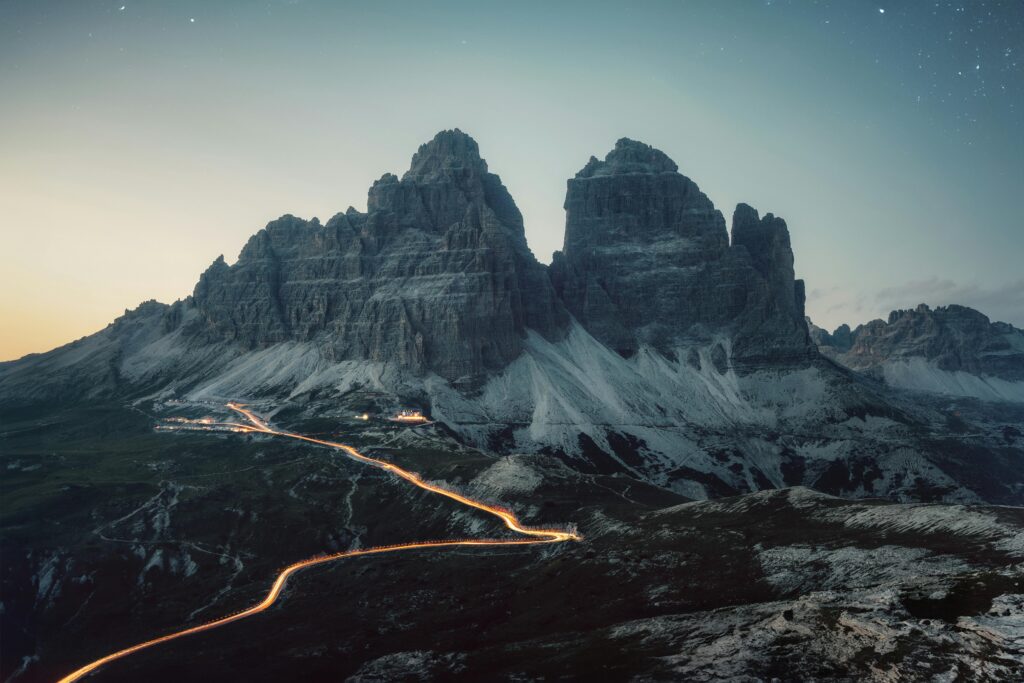
Standout sights on the journey
The road officially stretches for around 110km, but the sights are so immense you must allow a full day.
● Lake Carezza (Karersee): Shortly after starting your climb, you’ll encounter this jewel-like lake. Its emerald waters famously reflect the jagged Latemar peaks, a photographer’s dream. ● Costalunga Pass (Karerpass): Your first major pass, offering incredible vistas and a real sense of entering the high mountains. ● Pordoi Pass (Passo Pordoi): At 2,239 metres, this is one of the highest points on the road. The views of the sheer, fortress-like Sella Group are breathtaking. A cable car can whisk you up to Sass Pordoi (the ‘Terrace of the Dolomites’) for a truly unforgettable panorama. ● Falzarego Pass (Passo Falzarego): This is where history feels most present. Take the cable car up to Mount Lagazuoi, where you can explore the restored tunnels and trenches of the Italian and Austro-Hungarian positions, now an astonishing open-air museum.
Your base in the heart of the Dolomites: Corvara
Whilst you can drive the road in a day, to truly experience the region, you need a base. Right in the middle of the action, nestled in the Alta Badia valley, is the charming town of Corvara. It’s the perfect hub from which to explore.
For a recommended stay, the Hotel La Perla is exceptional. It’s a family-run hotel that blends Tyrolean tradition with five-star luxury and a Michelin-starred restaurant. It embodies the region’s spirit and places you at the epicentre of adventure. From here, the best of the Dolomites is on your doorstep.
Beyond the drive: Adventure from your doorstep
Staying in Corvara allows you to immerse yourself in the activities that make this UNESCO site so special.
● Cycling: For road cyclists, this is nirvana. You are directly on the famous Sellaronda circuit, a 55km loop over four major passes. It’s also the heart of the world-renowned Maratona Dles Dolomites gran fondo. The challenging climbs and thrilling descents are legendary. ● Walking and Hiking: The options are limitless. From gentle walks along valley floors to high-altitude treks on the Alta Via 1 trail, there is a path for every ability. The scenery is consistently magnificent. ● Via Ferrata: For the more adventurous, the Dolomites are the birthplace of the via ferrata or ‘iron path.’ These protected climbing routes, with fixed steel cables, ladders, and bridges, were originally built by troops in WWI to move through the mountains. Climbing one today is an incredible way to connect with the history of the White War whilst experiencing an adrenaline-fuelled adventure.
The Great Dolomite Road is a journey that stays with you. It’s a reminder of nature’s awesome power, the ingenuity of engineering, and the poignant, resilient history of humankind. It fully deserves its UNESCO status, and a place on any driving enthusiast’s bucket list.
Experience the majestic beauty of the Dolomites on our Dolomites & the Grossglockner Tour.

